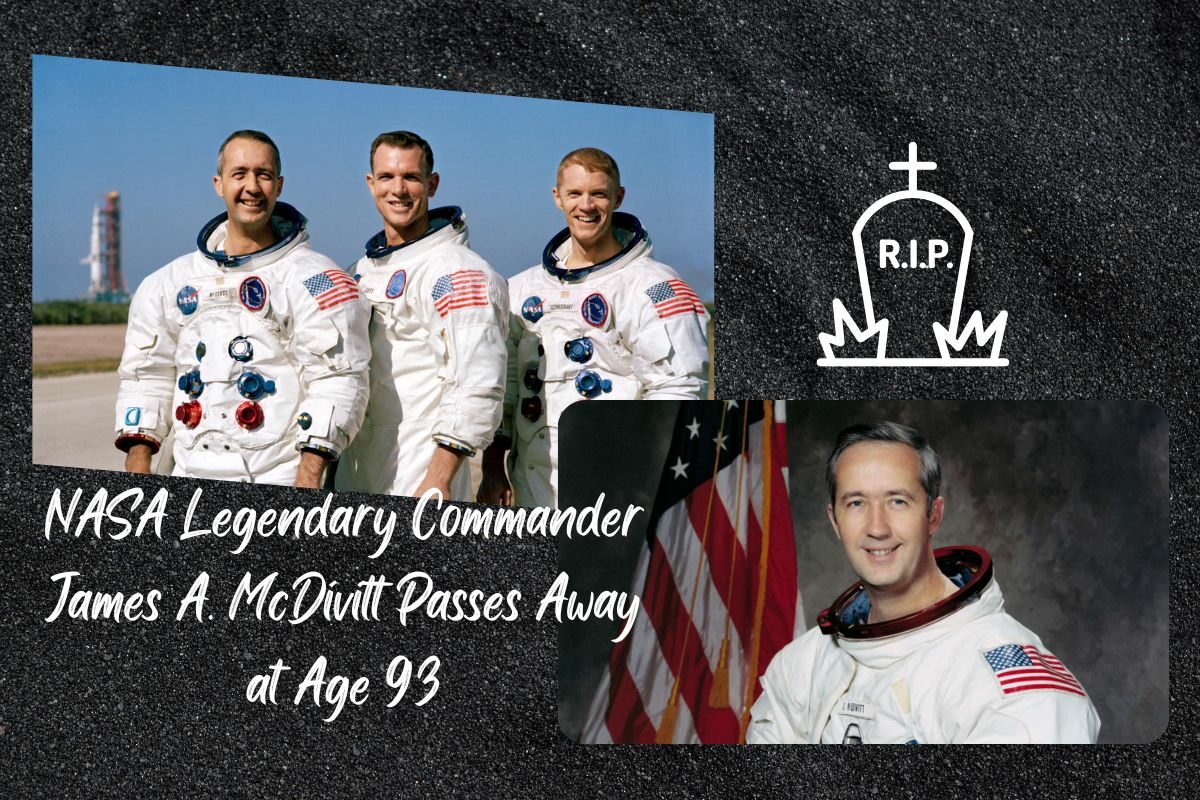James A. McDivitt, the commander of the Apollo 9 mission that tested the first full complement of lunar equipment has passed away. He was 93. Ed White his closest friend and coworker performed the first American spacewalk on the Gemini 4 mission in 1965 which McDivitt also served as mission commander for.
His images of White taken during the spacewalk have become iconic. After the Apollo 11 moon landing he turned down the opportunity to land on the moon and worked as the space agency’s program manager for five more Apollo missions.
Former NASA astronaut James McDivitt has died at 93; McDivitt commanded the Gemini 4 mission, in which Ed White became the 1st American to walk in space, and the Apollo 9 mission that tested the Apollo lunar module in Earth orbit; RIP, and thank you for your service pic.twitter.com/LPhFaqLoRR
— William Harwood (@cbs_spacenews) October 18, 2022
According to NASA, McDivitt passed away on Thursday in Tucson, Arizona.
In 1965, during his first flight, McDivitt saw “something out there” that resembled a beer can flying outside his Gemini spacecraft. People referred to it as a UFO and McDivitt later jokingly referred to himself as “a world-renowned UFO expert.” Years later, he concluded that it was simply the window’s reflection of bolts.
- Padres vs Phillies: NLCS Game 1 Stars Kyle Schwarber, Bryce Harper and Zack Wheeler
- Cowboys QB Future is More Clear After Eagles’ Loss
- ‘Superfly’ Actor and Rapper Imprisoned to 50 Years of Life for Several Rapes
One of the less well-known NASA space missions was Apollo 9 which only orbited the Earth and made no further progress. McDivitt stated in a 1999 oral history that he could understand why it was disregarded: “I could see why they would, you know, it didn’t land on the moon. It is therefore hardly a part of Apollo. However, the lunar module was crucial to the overall program.
The lightweight lunar lander, known as Spider was put to the test for the first time in space on McDivitt’s flight with fellow Apollo 9 crew members Rusty Schweickart and David Scott. They wanted to test whether people could live there whether it could dock with other spacecraft in orbit and—most importantly for the Apollo 13 crisis—whether the lunar module’s engines could operate a stack of spacecraft that included the command module Gumdrop.
When the lunar module first arrived for training, McDivitt was unimpressed: “I looked at Rusty and he looked at me and we said, ‘Oh my God! We’re going to fly something like this, really? Therefore, it was extremely tacky. “It was like cellophane and tin foil taped together with staples!”
McDivitt, in contrast to many of his fellow astronauts, didn’t have a childhood dream of flying. He was simply proficient.
In his youth, McDivitt struggled to pay for college in Kalamazoo, Michigan. Before enrolling in a junior college, he worked for a year. He had never flown before joining the Air Force at the age of 20, shortly after the start of the Korean War. Before he even took off, he was accepted for pilot training.
Fortunately, he later reflected, “I liked it.”
McDivitt completed 145 combat missions in Korea before returning to Michigan and earning his aeronautical engineering degree from the University of Michigan. He later rose to the position of one of the most skilled test pilots at Edwards Air Force Base and enrolled as the school’s first pupil. Work was being done by the military on its own and later abandoned human space missions.
RIP James McDivitt, one of the last true NASA/American Space heroes! pic.twitter.com/SdPkIDBL5y
— Space Shuttle Almanac (@ShuttleAlmanac) October 18, 2022
In 1962, NASA selected McDivitt to be a member of its second class of astronauts referred to as the “New Nine” which also included Jim Lovell, Frank Borman and Neil Armstrong. White and McDivitt were chosen to command the second two-man Gemini mission. The four-day mission in 1965 completed 66 full circles of the earth.
Four months prior to the moon landing, in March 1969, Apollo 9’s shakedown flight which lasted ten days was largely uneventful and problem-free. In 1999, McDivitt reflected, “After I flew Apollo 9 it became clear to me that I wasn’t going to be the first guy to land on the moon which was important to me. And I didn’t think it mattered that I was the second or third guy.
Therefore, McDivitt entered program management first for the Houston component of the entire program and then for the Apollo lunar lander.
In 1972, McDivitt left the Air Force and NASA for a number of positions in the private sector including president of Pullman Inc.’s railcar division and a senior position at aerospace company Rockwell International. He was a brigadier general when he left the military.
Keep following venturejolt.com for more updates. Don’t forget t bookmark our site for the latest updates.
